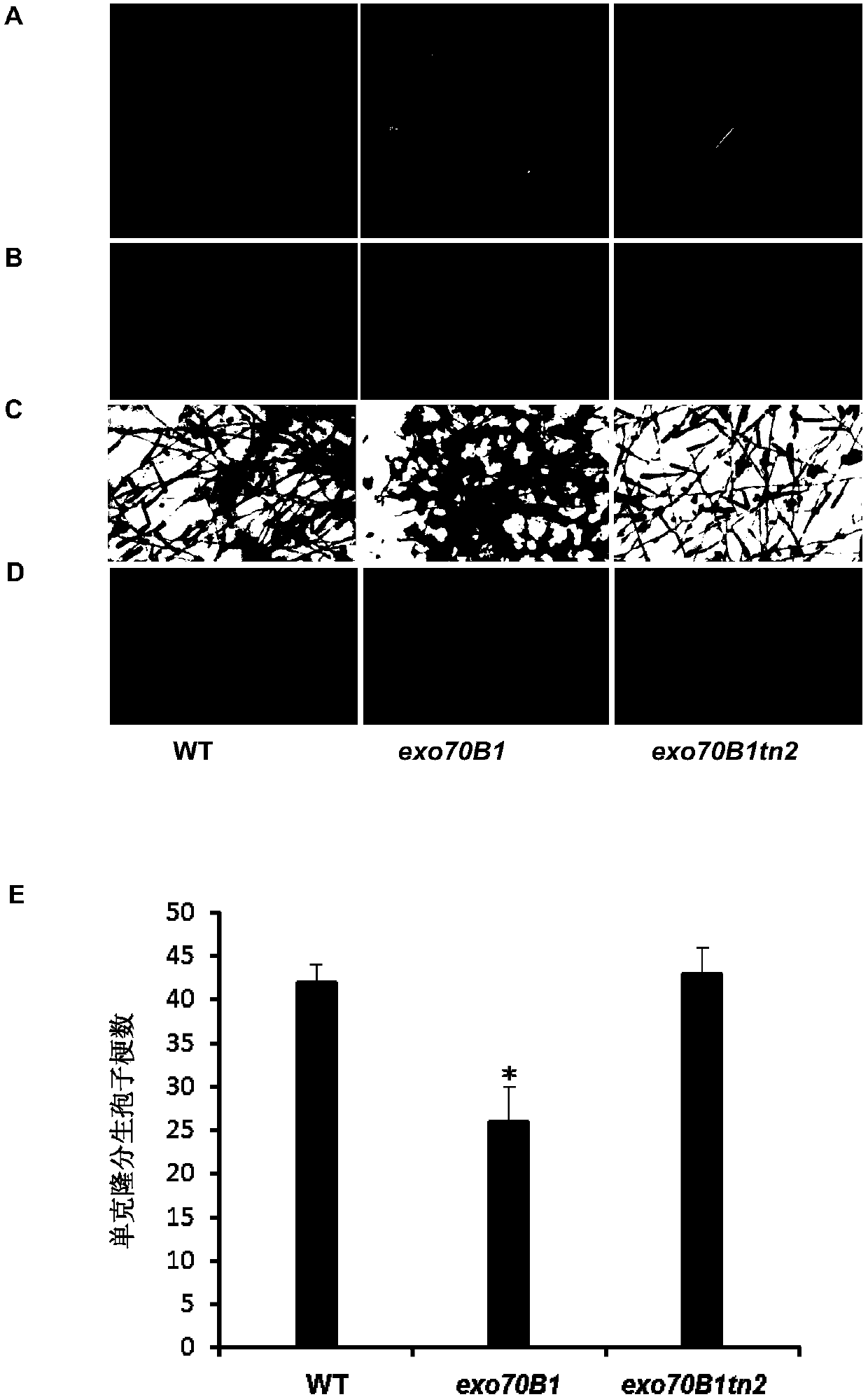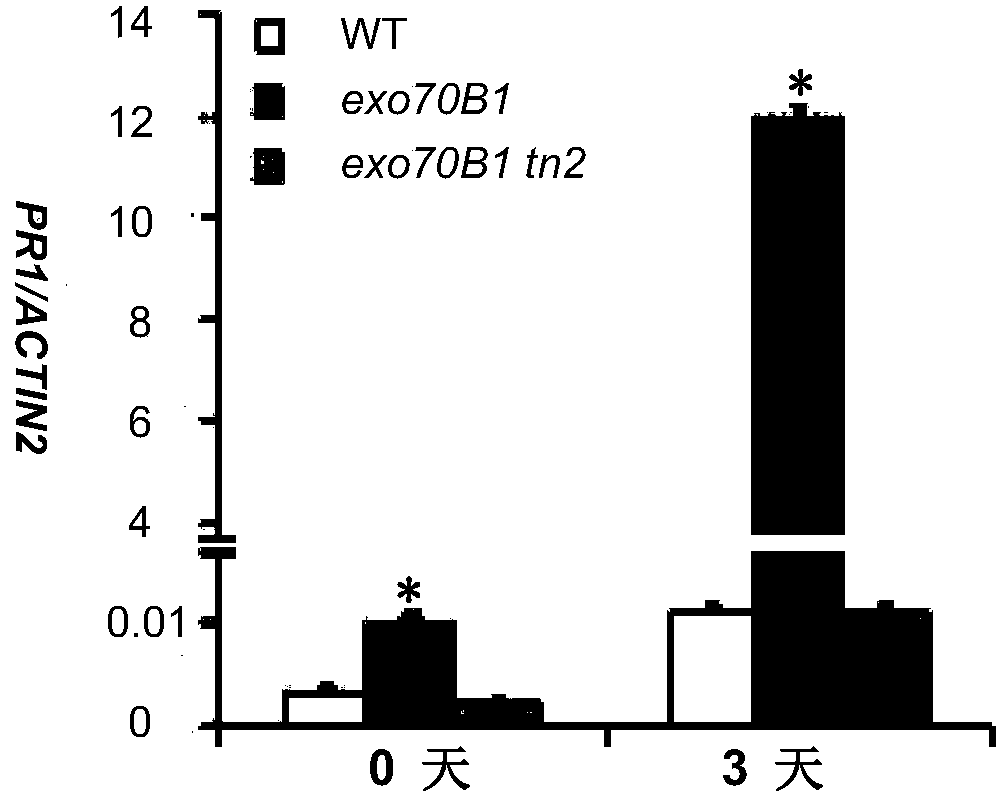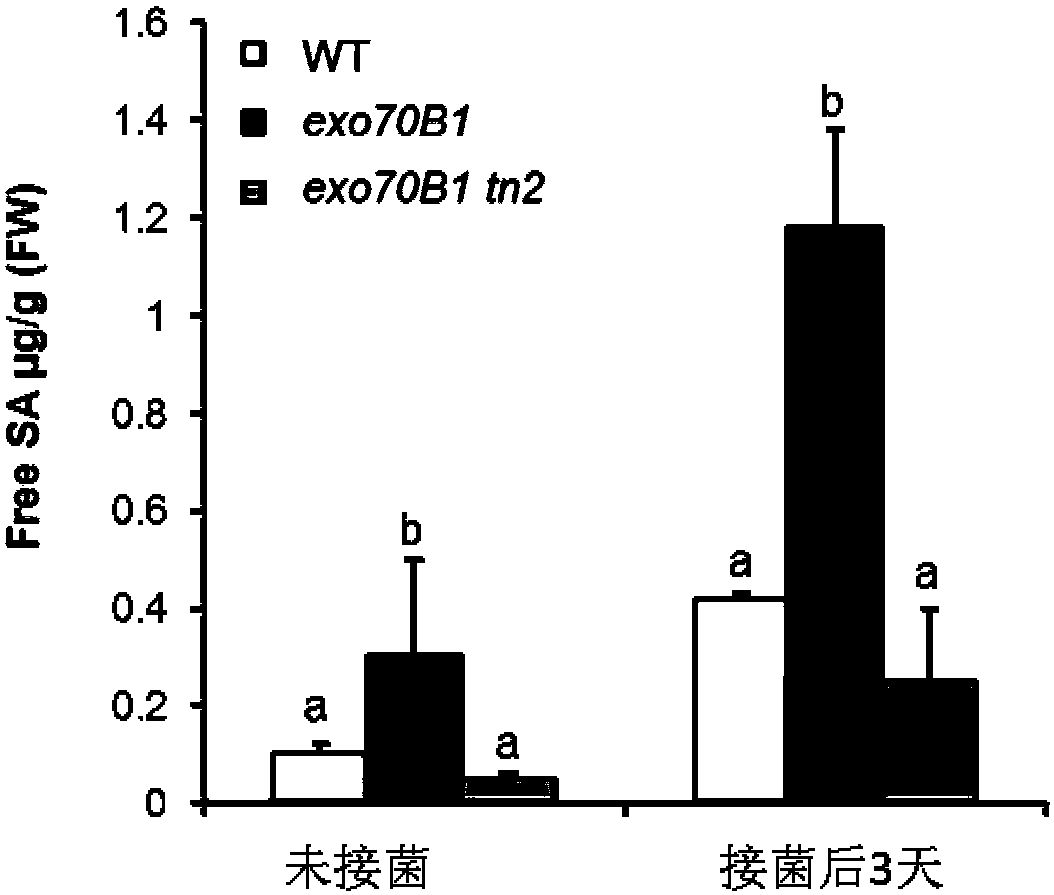Cloning and application of an r gene tn2 regulating plant powdery mildew resistance
A plant resistance and plant technology, applied in the direction of plant gene improvement, application, plant peptides, etc., can solve problems such as infection, agricultural production economic loss, etc.
- Summary
- Abstract
- Description
- Claims
- Application Information
AI Technical Summary
Problems solved by technology
Method used
Image
Examples
Embodiment 1
[0051] Embodiment 1, TN2 mutation inhibits exo70B1 mutant powdery mildew resistance
[0052] 1. Obtaining of mutant exo70B1tn2
[0053] A mutant library of exo70B1 was obtained by EMS mutagenesis. In the M2 generation, a mutant exo70B1tn2 that can inhibit exo70B1-mediated powdery mildew resistance was screened.
[0054] The mutant exo70B1tn2 can also be prepared according to the following method: the mutant exo70B1 (N717829) is crossed with the mutant tn2 to obtain a hybrid F1 generation, and the homozygous double mutant exo70B1tn2 can be obtained by screening the F2 generation obtained by selfing of the F1 generation.
[0055] Wild-type Arabidopsis Col-0 (hereinafter referred to as wild-type Arabidopsis), recorded in the following documents: CatherineA.Frye, Dingzhong Tang, and Roger W.Innes (2001).Negative regulation of defense responses in plants by a conserved MAPKK kinase. PNAS 98(1):373-378; Publicly available from Institute of Genetics and Developmental Biology, Chine...
Embodiment 2
[0069] Example 2, TN2 mutation inhibits the expression of PR1 gene (AY064023, submitted on November 19, 2001) in exo70B1 mutant
[0070] In order to verify whether the TN2 gene is involved in plant disease resistance, real-time quantitative PCR was used to detect the expression patterns of PR1 gene in Col-0, mutant exo70B1 and double mutant exo70B1tn2 before and after inoculation with powdery mildew. The instrument used is Germany Eppendorf Mastercyclereprealplex 4S, details are as follows:
[0071] Arabidopsis wild-type plants Col-0(WT), mutant exo70B1 and double mutant exo70B1tn2 grown for 4 weeks were inoculated with powdery mildew for 3 days, and the leaves of the uninoculated and 3-day-inoculated plants were taken respectively and put into the liquid Quick-frozen in nitrogen, then stored at -70°C, and extracted RNA for later use.
[0072] The total RNA of leaves was extracted with Trizol (Invitrogen) reagent, the contaminated DNA was digested with DNase I (Promega) for h...
Embodiment 3
[0075] Example 3, TN2 mutation inhibits the accumulation of free salicylic acid in the exo70B1 mutant
[0076] Salicylic acid is a central molecule regulating plant disease resistance. Salicylate-dependent signaling is critical for the establishment of local and systemic resistance in plants. The content of free salicylic acid in Col-0, mutant exo70B1 and double mutant exo70B1tn2 before and after inoculation with powdery mildew was detected.
[0077] Seedlings of Arabidopsis wild-type plant Col-0 (WT), mutant exo70B1 and double mutant exo70B1tn2 were inoculated with powdery mildew in large quantities. The leaves of each material were quick-frozen in liquid nitrogen, and then stored at -70°C to extract salicylic acid for later use.
[0078]The content of salicylic acid was determined by high-performance liquid chromatography, and the method described in the literature Xin Li, Yuelin Zhang, Joseph D Clarke, Yan Li, Xinnian Dong (1999) Identification and cloning of negative reg...
PUM
 Login to View More
Login to View More Abstract
Description
Claims
Application Information
 Login to View More
Login to View More - Generate Ideas
- Intellectual Property
- Life Sciences
- Materials
- Tech Scout
- Unparalleled Data Quality
- Higher Quality Content
- 60% Fewer Hallucinations
Browse by: Latest US Patents, China's latest patents, Technical Efficacy Thesaurus, Application Domain, Technology Topic, Popular Technical Reports.
© 2025 PatSnap. All rights reserved.Legal|Privacy policy|Modern Slavery Act Transparency Statement|Sitemap|About US| Contact US: help@patsnap.com



